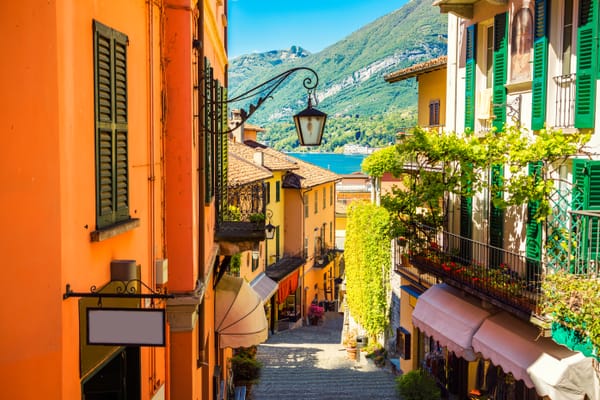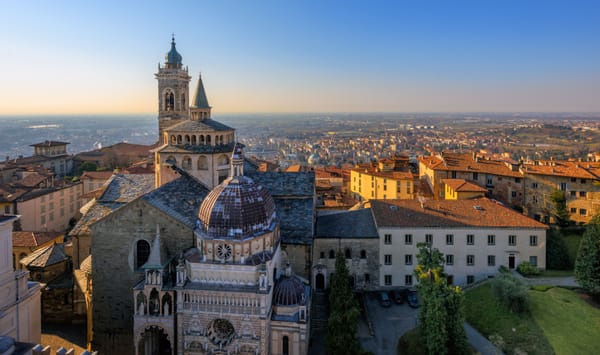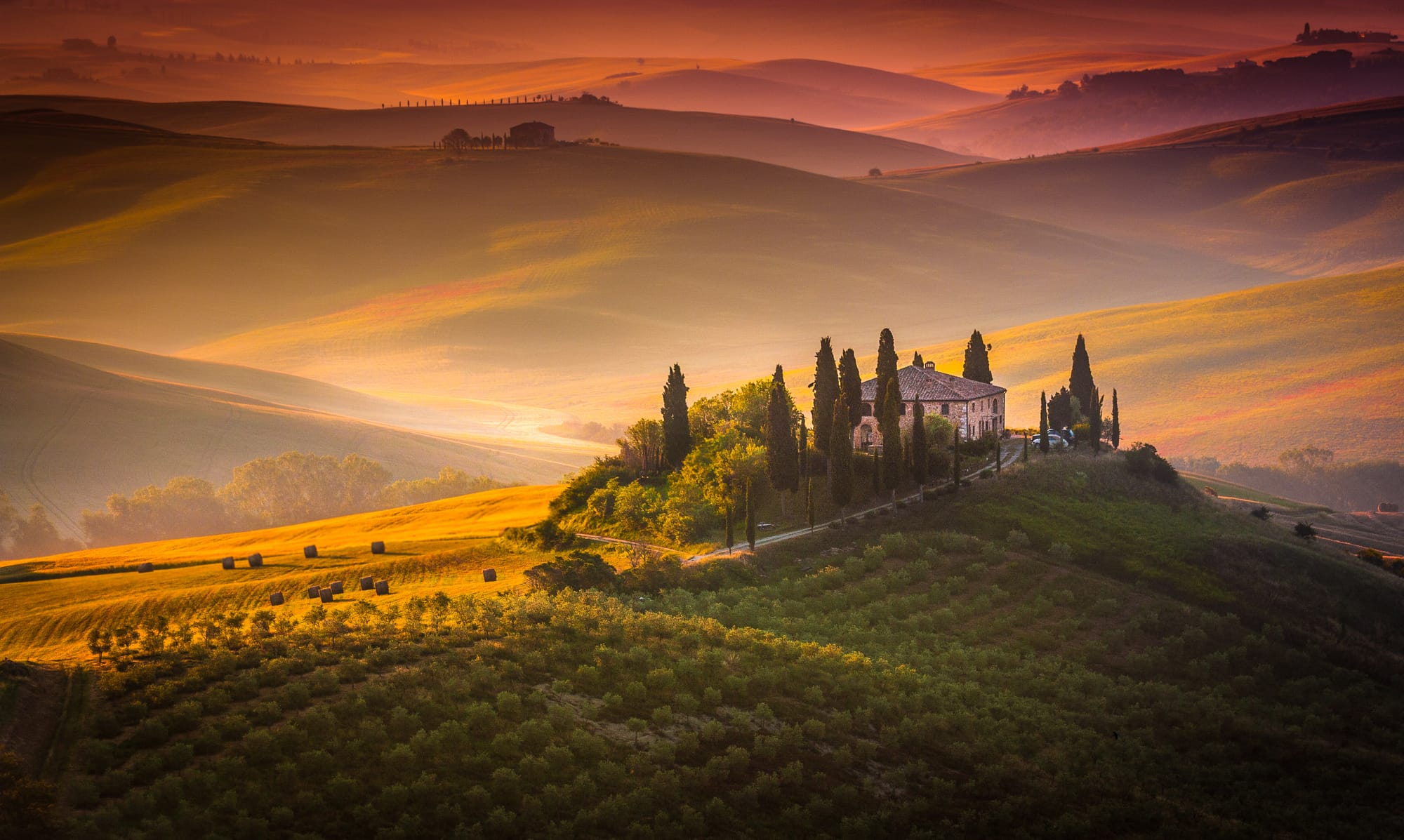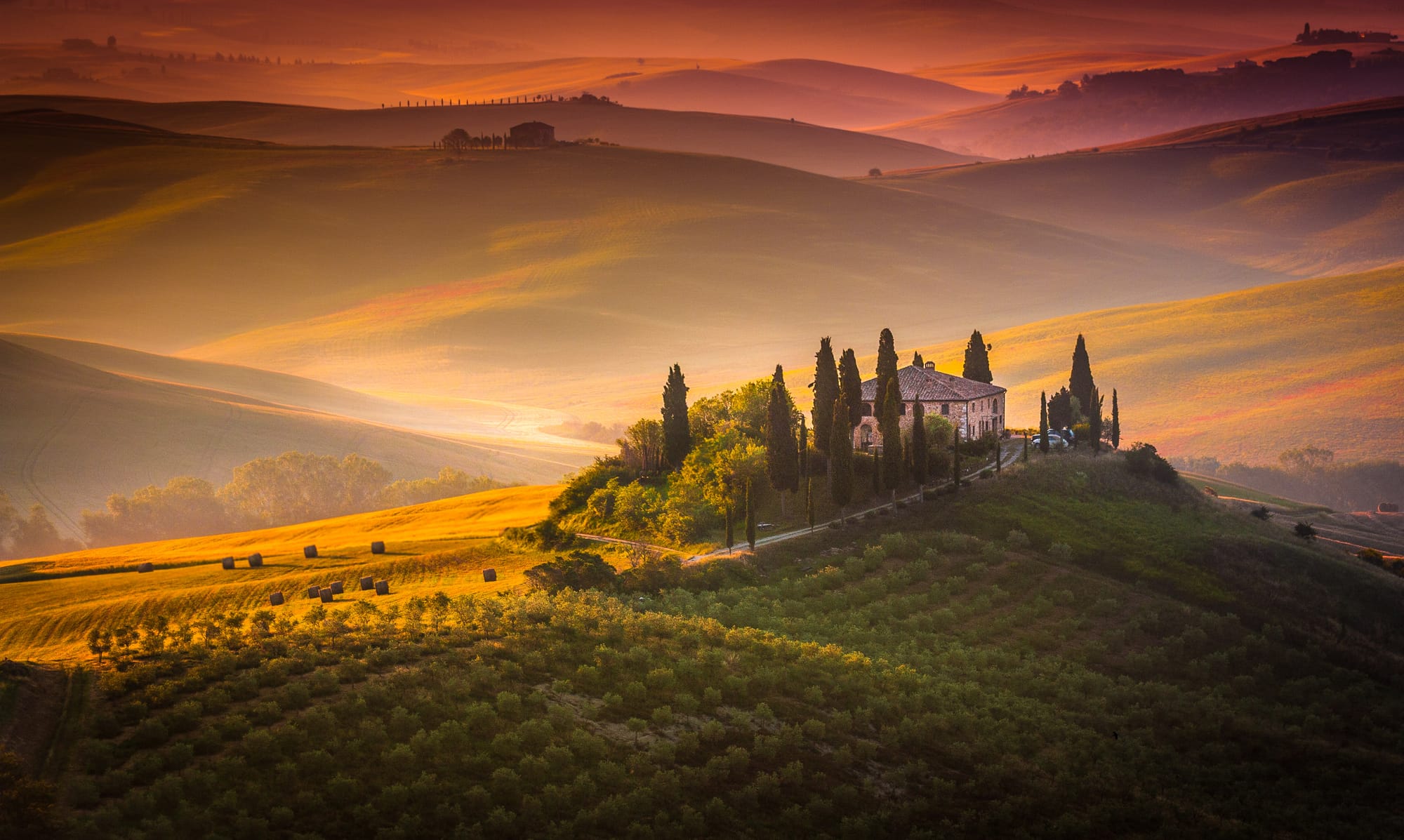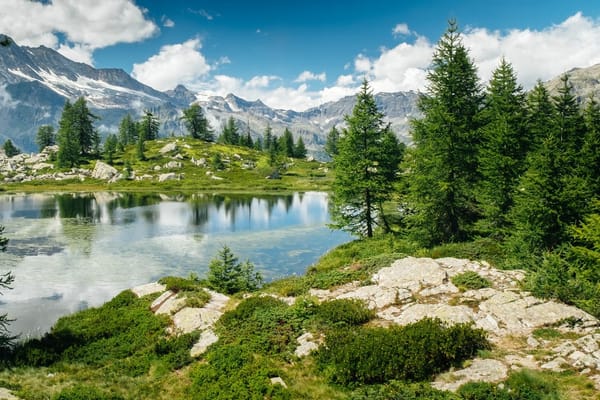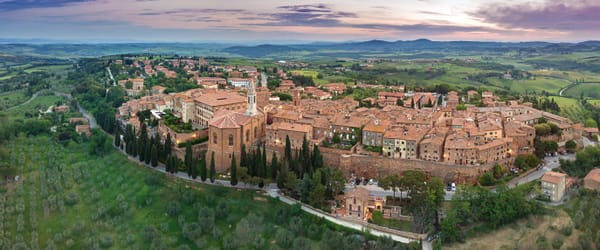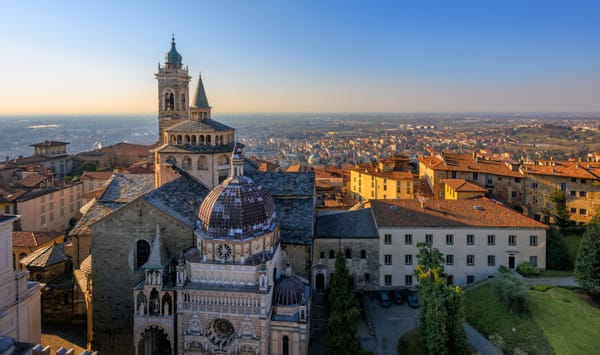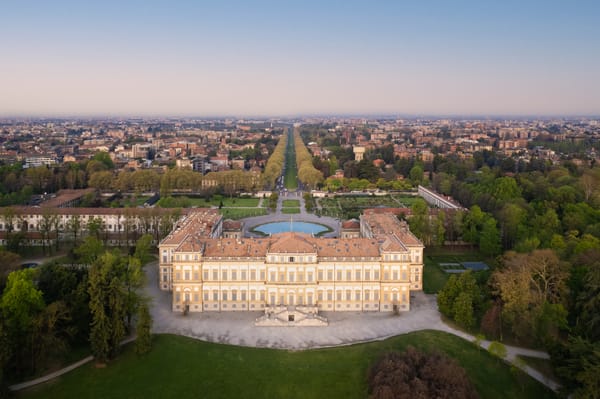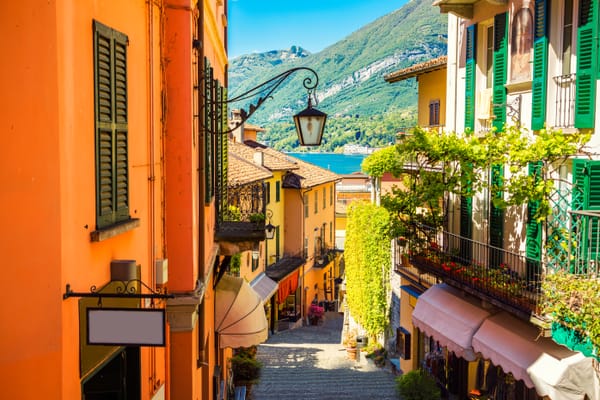The Val d’Orcia is not just a destination; it is the emotional heart of the Tuscan countryside. It is the iconic landscape that lives in the collective imagination, so perfectly composed that it feels as though it were painted by a Renaissance master. This corner of Italy, where nature and human ambition exist in perfect dialogue, is a place of sublime, tranquil beauty.
This harmonious landscape is no happy accident. It is the result of a long history as a contested frontier between the rival city-states of Siena and Florence, a history still visible in its fortified hilltop towns. Traversed by the ancient Via Francigena pilgrimage route, the valley became a crossroads of culture and ideas. Today, this masterpiece of landscape design is recognized as a UNESCO World Heritage site—a living testament to a story of agriculture, art, and humanism.
This guide is designed for the traveler seeking to uncover the layers of history, culture, and gastronomy that make the Val d'Orcia an essential Italian experience.
In this article:
Why visit Val d'Orcia? A living masterpiece in the heart of Tuscany
To visit the Val d'Orcia is to step into a living masterpiece. The region's powerful appeal—officially recognized by its designation as a UNESCO World Heritage cultural landscape—is not for a single monument, but for the perfect harmony achieved between its people and the land.
For the discerning traveler, the reasons to visit are threefold:
1. An iconic Tuscan landscape
This is the Tuscany of the imagination, brought to life. The Val d'Orcia offers a breathtaking succession of landscapes that change with the seasons:
- Vibrant green hills and fields of red poppies in the spring.
- Golden waves of wheat under the sun in summer.
- Famous groves of cypress trees punctuating the horizon. This iconic scenery, redesigned during the Renaissance to be aesthetically perfect, has inspired artists for centuries and provides an endless canvas for photographers.
2. World-class food and wine
This is a land of profound culinary traditions, where the flavors are a direct expression of the territory. The Val d'Orcia is a pilgrimage destination for food and wine lovers, celebrated for:
- Brunello di Montalcino, one of Italy’s most prestigious and age-worthy red wines.
- Pecorino di Pienza, a world-renowned sheep’s milk cheese with a flavor shaped by the aromatic local herbs.
- Authentic, hand-rolled pici pasta, a thick, rustic spaghetti that is a regional specialty.
- Exceptional extra virgin olive oil, cured meats, and the neighboring Vino Nobile di Montepulciano.
3. A rich tapestry of history and art
The Val d'Orcia is dotted with architectural jewels and towns steeped in history. A journey here is a journey through time, allowing you to explore:
- Pienza, the "Ideal City" of the Renaissance and a flawless example of humanist urban planning.
- Formidable medieval hilltop towns like Montalcino and San Quirico d'Orcia.
- The ancient Via Francigena pilgrimage route that winds through the heart of the valley.
- Quiet Romanesque abbeys, rustic chapels, and fortified farmhouses that tell the story of centuries of life in this incredible region.
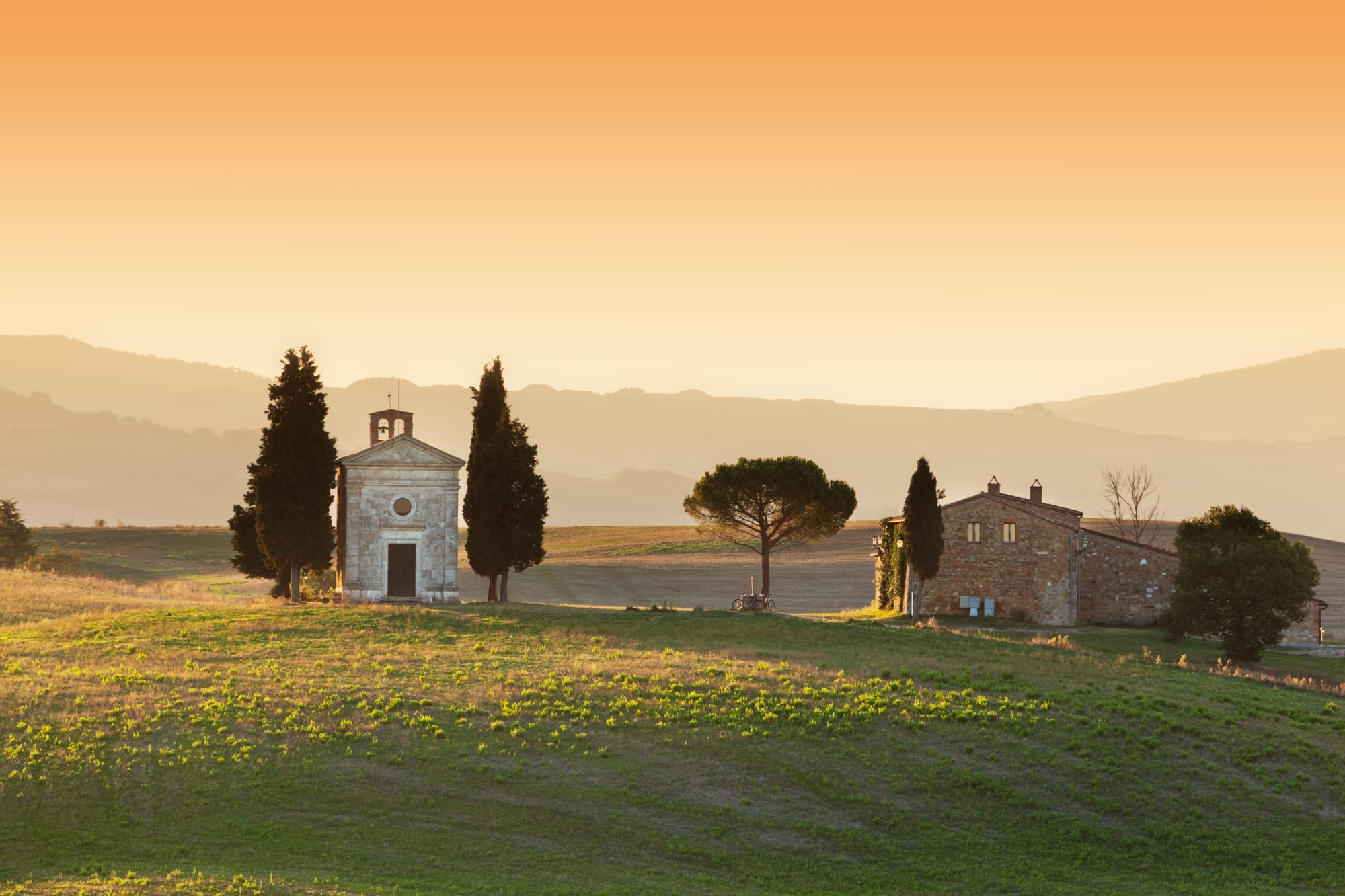
How to get to Val d'Orcia: a guide by train, car & air
Navigating to and through this rural paradise in southern Tuscany is part of the adventure. While the Val d'Orcia feels wonderfully remote, it is well-connected to major hubs like Florence and Rome.
By air: finding the nearest airports
For most international travelers, the journey will begin by flying into one of central Italy's main airports. From the airport, renting a car is essential for exploring the Val d'Orcia.
The best airport choices are:
- Florence Airport, Peretola (FLR): The closest major airport to the north. The drive to the Val d'Orcia is approximately 1.5 to 2 hours.
- Rome Fiumicino Airport, Leonardo da Vinci (FCO): The largest international hub with the most flight options. The drive is approximately 2.5 hours to the southern edge of the valley.
- Pisa Airport, Galileo Galilei (PSA): A great option for European flights and often a base for low-cost carriers. The drive is about 2 to 2.5 hours.
- Perugia Airport, San Francesco d'Assisi (PEG): A smaller airport but often the closest, especially to the eastern side of the valley. The drive can be just over 1 hour.
By car: the recommended way to explore
Driving is unequivocally the best way to experience the Val d’Orcia. A car provides the freedom and flexibility to explore winding country roads, discover hidden hamlets, and stop for photos at a moment's notice.
Renting a car at the airport upon arrival is the most efficient option.
- From the North (Florence/Pisa): Take the A1 autostrada (highway) south towards Rome. The most common exit is Chiusi-Chianciano Terme, from which you can easily follow signs to towns like Montepulciano and Pienza.
- From the South (Rome): Take the A1 autostrada north towards Florence. You can exit at Chiusi-Chianciano Terme or, for a more scenic approach, exit at Orvieto and enjoy the drive through the countryside.
Once you are in the region, the most famous scenic drive is along the SR2 (the old Via Cassia), which offers spectacular, classic views of the Tuscan landscape.
By train: a practical alternative
While you cannot reach the heart of the valley by train, it is an excellent way to get to the region's doorstep without a long drive. The main railway station is Chiusi-Chianciano Terme. This station is on the primary high-speed line connecting Rome and Florence, making it easily accessible.
From the Chiusi station, it is essential to have a pre-booked rental car waiting or to arrange a private transfer to your accommodation. Relying on local buses is not recommended due to infrequent service.
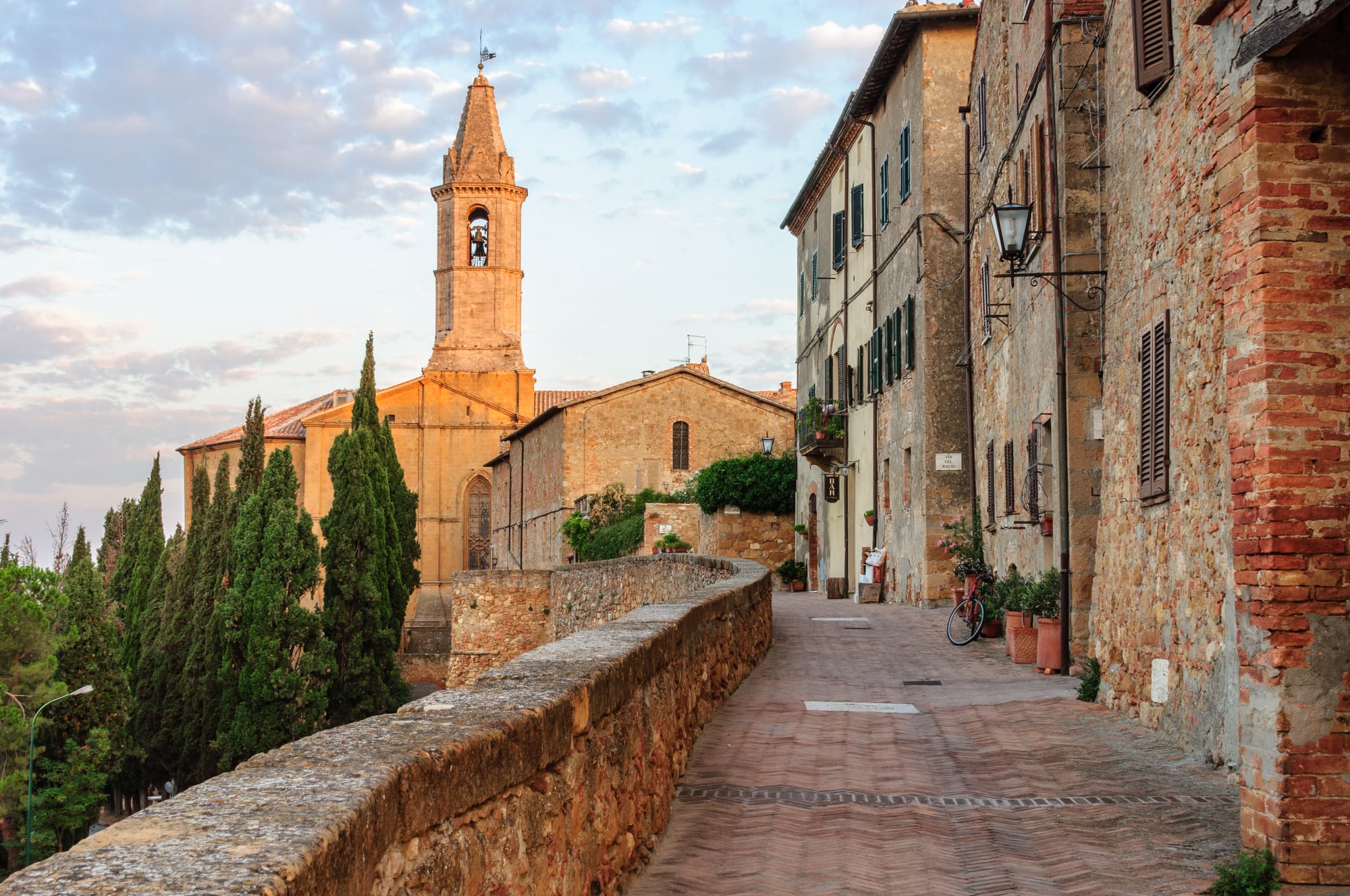
Top things to do in Val d'Orcia (and the best towns to do them in)
Exploring the Val d’Orcia’s enchanting hilltop towns is the centerpiece of any visit. Each offers a unique window into the region's history, culture, and flavors. Here’s what you can’t miss in the most essential locations.
Pienza: the ideal Renaissance town
The jewel of the valley, Pienza is a creation of the humanist Pope Pius II, who transformed his humble birthplace into a model Renaissance town. The central Piazza Pio II is a masterclass in architectural harmony. But beyond its beauty, Pienza is a hub for one of Tuscany's greatest culinary treasures: Pecorino cheese.
Top experiences in Pienza:
- Visit Palazzo Piccolomini: Tour the Pope's former residence for a glimpse into Renaissance life and enjoy its magnificent hanging garden.
- Taste Pecorino di Pienza: Step into any local shop for a tasting of this famous sheep's milk cheese, from fresh to aged (stagionato).
- Walk the panoramic promenade: Stroll along the path behind the Duomo for some of the most stunning and accessible views over the Val d'Orcia.
For more details, read our complete Pienza travel guide here.
Montalcino: a pilgrimage for wine lovers
This imposing hilltop town is synonymous with one of the world's greatest red wines: Brunello di Montalcino. The imposing 14th-century Rocca (fortress) dominates the skyline, offering protection to a charming labyrinth of medieval streets, artisan shops, and cozy restaurants perfect for a long lunch.
Top experiences in Montalcino:
- Taste Brunello di Montalcino: Visit the enoteca inside the fortress or a nearby winery to sample this world-renowned wine.
- Climb the Rocca: Walk the ramparts of the fortress for unparalleled 360-degree views of the surrounding countryside.
- Explore the Civic and Diocesan Museum: Discover a rich collection of Sienese art.
Montepulciano: grand palaces and noble wine
Perched high on a limestone ridge, Montepulciano is known for its elegant Renaissance palaces and its esteemed Vino Nobile di Montepulciano. The steep main street, the Corso, climbs dramatically to the stunning Piazza Grande, the town's highest and most beautiful point.
Top experiences in Montepulciano:
- Tour historic underground cellars: Explore the monumental cellars built beneath the city's palaces and enjoy a tasting of Vino Nobile.
- Climb the Palazzo Comunale tower: For a small fee, you can ascend the tower for one of the best views in all of Tuscany.
- Get lost in the side streets: Wander off the main Corso to discover hidden archways, quiet courtyards, and authentic artisan shops.
San Quirico d'Orcia: a tranquil historic gem
Located strategically along the ancient Via Francigena pilgrimage route, this beautifully preserved town is often less crowded than its neighbors. It offers a peaceful and authentic atmosphere.
Top experiences in San Quirico d'Orcia:
- Visit the Collegiata church: Admire the stunning Romanesque architecture and its three intricately carved portals.
- Relax in the Horti Leonini: Stroll through this perfect example of a 16th-century Italian garden, a serene public park.
Bagno Vignoni: the village with a water piazza
This tiny, unforgettable hamlet offers one of the most unique sights in Tuscany. The main piazza is not stone, but a large, steaming pool of natural thermal water sourced from a volcanic spring used since Roman times.
Top experiences in Bagno Vignoni:
- Soak in the thermal waters: While the main piazza pool is off-limits, you can book a session at a nearby spa (like Hotel Posta Marcucci) to enjoy the therapeutic waters.
- See the Parco dei Mulini: Walk below the village to see the free thermal streams and the ancient mills carved into the rock.
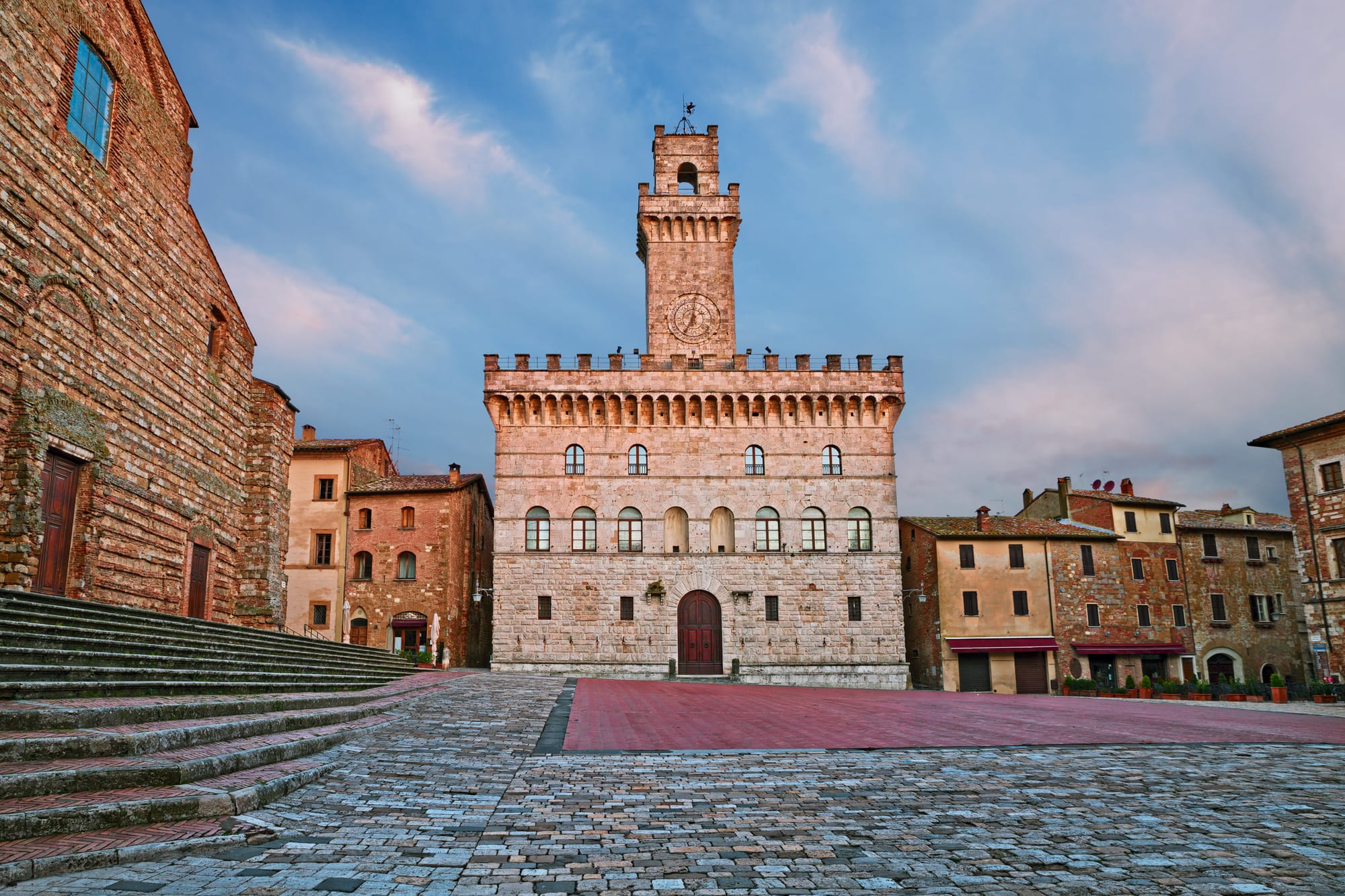
Val d’Orcia off the beaten path: authentic experiences and hidden gems
For the traveler looking to dig deeper, the Val d’Orcia reveals its secrets slowly. To truly connect with the spirit of the region, venture beyond the main towns to discover these unforgettable places and activities.
Monticchiello: a fortified medieval hamlet
A tiny, perfectly preserved hamlet near Pienza, Monticchiello offers a genuine glimpse into a quieter way of life. Encased within its medieval walls, this village is famous for its "Teatro Povero" (Poor Theatre), a unique tradition where residents perform a play each summer based on their lives and local issues.
- Pro Tip: If visiting in the summer, check the Teatro Povero schedule online in advance. Even if you don't see the play, walking through this incredibly peaceful village is a reward in itself.
Cappella della Madonna di Vitaleta: the iconic chapel
This is perhaps the most famous photograph in Tuscany. A solitary chapel flanked by two cypress trees, it is the romantic ideal of the region. Reaching it requires a short walk along a dirt track, making the experience feel even more special.
- Pro Tip: To find it, search for "Chapel of our Lady of Vitaleta" on your GPS. The best light for photos is during the golden hours of early morning and the hour before sunset.
Abbazia di Sant'Antimo: a Romanesque masterpiece
A short, scenic drive from Montalcino, this magnificent Romanesque abbey is a masterpiece of medieval architecture. Set in a peaceful landscape of olive groves, the abbey is built from luminous alabaster and travertine, creating an ethereal glow.
- Pro Tip: The experience is elevated by hearing the monks perform their daily Gregorian chants. Check the abbey's official website for the most up-to-date schedule of services (Lodi, Ora Media, Vespri) to time your visit.
Hiking the Via Francigena pilgrimage trail
This ancient pilgrimage route from Canterbury to Rome winds right through the heart of the Val d'Orcia. Hiking a section of it connects you to centuries of history and offers unparalleled views away from the roads.
- Pro Tip: A beautiful and accessible section runs from San Quirico d'Orcia to Bagno Vignoni. This is a relatively easy walk of about 3 km (2 miles) that takes roughly one hour, rewarding you with a unique arrival at the thermal village.
Visiting a local Pecorino farm
Go beyond the cheese shops in Pienza and visit a local caseificio (cheese dairy) to see how world-famous Pecorino di Pienza is made. This provides a direct link to the pastoral traditions that have shaped this land for centuries.
- Pro Tip: This is not a drop-in experience. You must book a tour and tasting in advance. Reputable farms like Caseificio Cugusi are working farms and welcome visitors by appointment only, offering an incredibly authentic look at their craft.
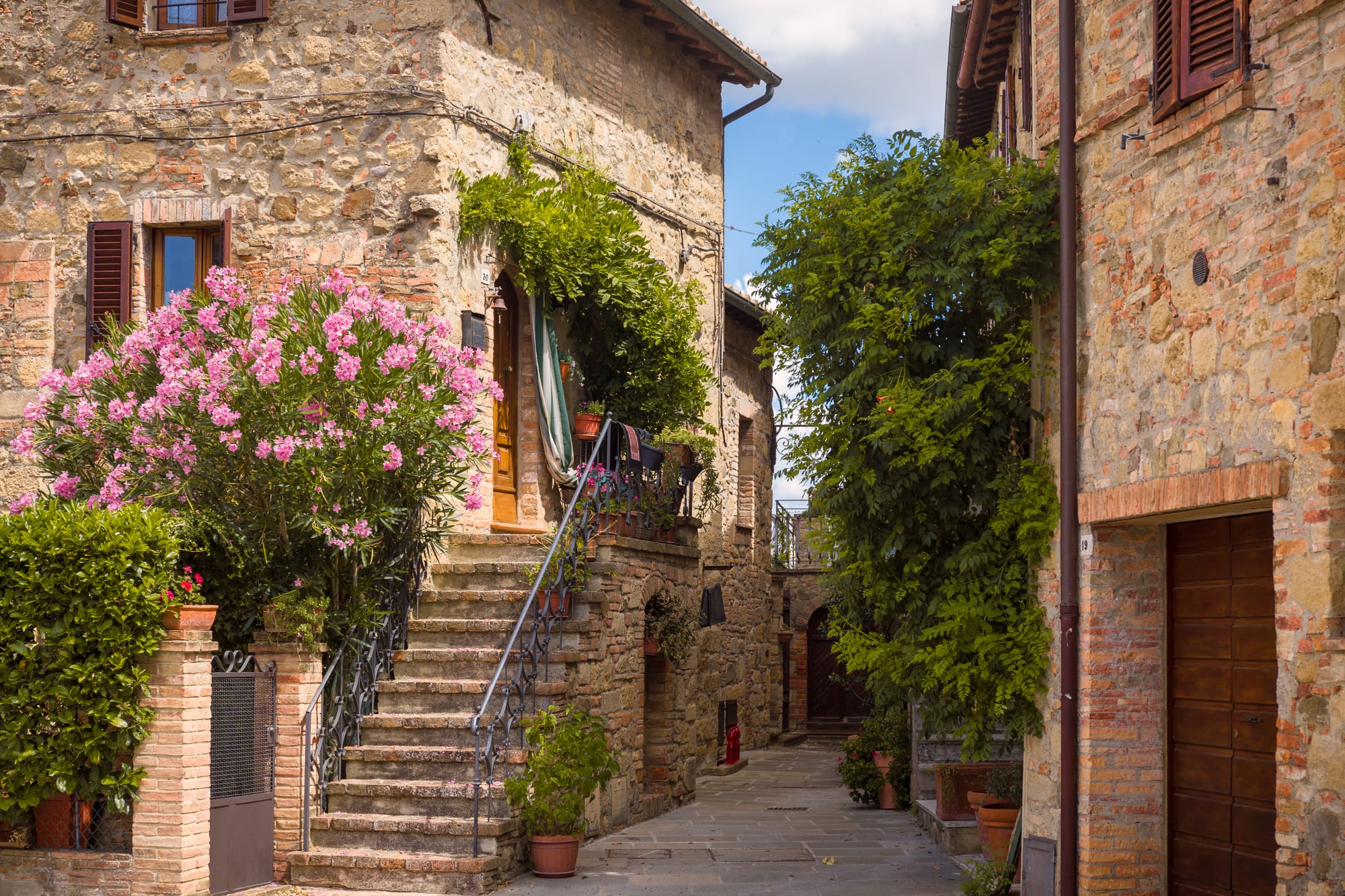
How to plan your trip to Val d’Orcia: a practical guide
A well-planned trip to the Val d'Orcia allows for both structure and the spontaneity to get lost on a beautiful country road. Here are the practical answers to the most common planning questions.
When to go: the best time to visit the Val d'Orcia
The Val d'Orcia is stunning year-round, but the shoulder seasons offer the best combination of pleasant weather, beautiful scenery, and fewer crowds.
- Spring (April - early June): Best for vibrant landscapes. The hills are a brilliant, lush green, often carpeted with red poppies and other wildflowers. The weather is generally warm and pleasant, perfect for hiking and sightseeing.
- Autumn (September - October): Best for foodies and photographers. The temperatures are ideal, and the landscape is bathed in a soft, golden light. This is the season of the grape and olive harvests, and many food festivals (sagre) take place. (As of September 2025, this is the perfect time to be planning or visiting).
- Summer (July - August): Peak season. Expect hot temperatures and the largest crowds, especially in towns like Pienza. The landscape is a beautiful golden brown, but midday exploration can be challenging due to the heat.
- Winter (November - March): For solitude seekers. This is the quietest season, offering a wonderfully atmospheric experience with very few tourists. However, days are shorter, the weather is cold, and some restaurants or attractions may have reduced hours.
Pro Note: For the ideal trip, aim for mid-May to mid-June or the month of September.
How long to stay: crafting your perfect itinerary
The Val d'Orcia rewards a slower pace of travel. Rushing through its towns in a single day means missing its essence.
- For a 3 to 4-day trip (long weekend): This gives you enough time to comfortably visit the main highlights. You can dedicate a day each to the areas around Pienza, Montalcino, and the central valley without feeling rushed.
- For a 5 to 7-day trip (full week): This is the ideal duration for a truly immersive experience. A full week allows you to explore all the main towns, discover off-the-beaten-path gems, enjoy a leisurely wine tasting, take a cooking class, or go for a hike on the Via Francigena.
Where to stay: choosing your home base
The choice of accommodation defines your experience. Consider basing yourself in a central town like Pienza or San Quirico d'Orcia for easy access to the entire valley.
- Agriturismo (Farm Stay): Best for authentic immersion. Staying in a restored farmhouse is the quintessential Val d'Orcia experience. These range from rustic to luxurious and often have pools and restaurants serving homegrown produce.
- Historic Town Centers: Best for convenience. Staying in a B&B or small hotel in a town like Pienza or Montalcino allows you to walk to restaurants, cafes, and shops in the evening after a day of exploring.
- Private Villa: Best for groups, families, and longer stays. Renting a private villa provides the ultimate base for relaxation and independence, often with a private pool and kitchen facilities for enjoying local market finds.
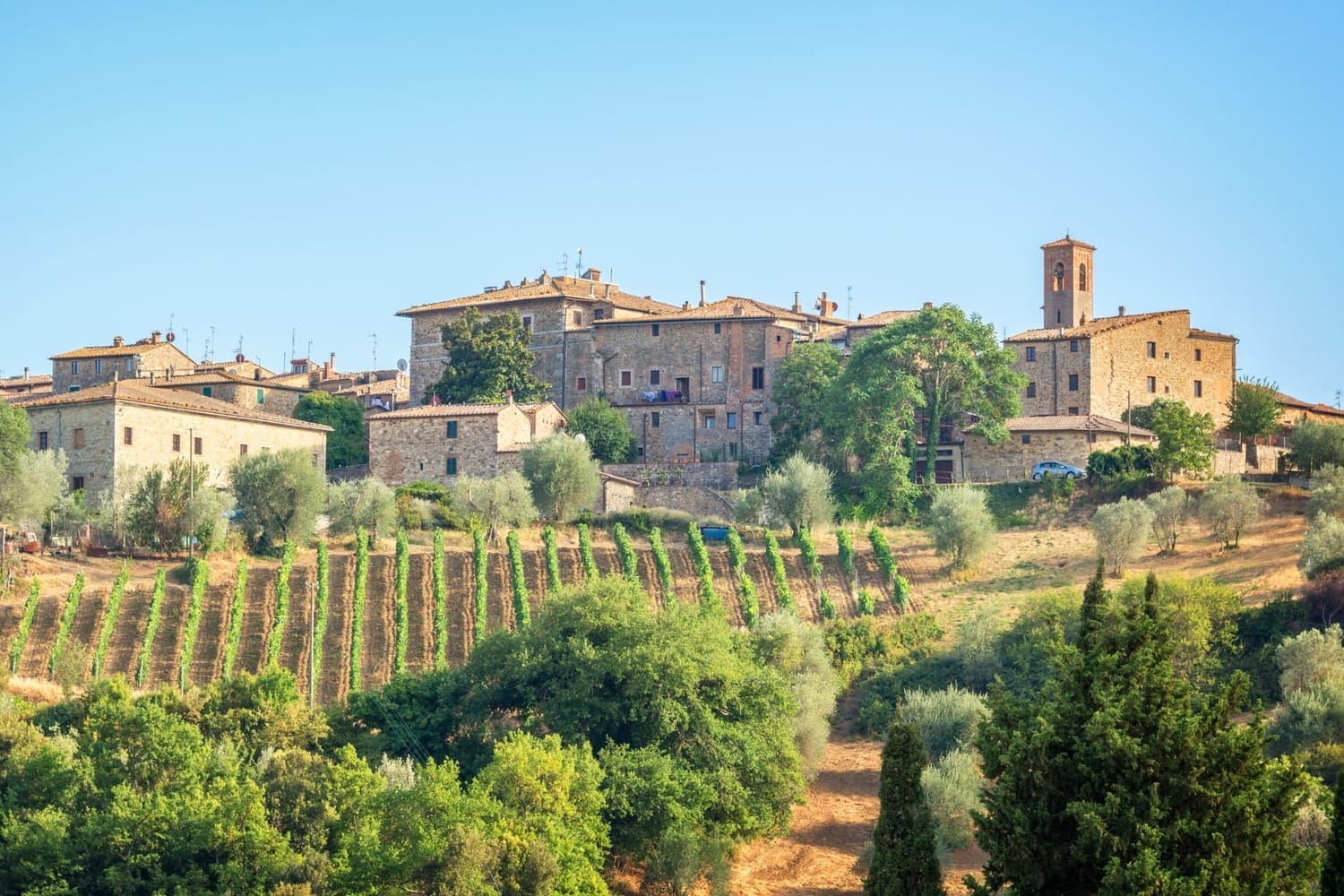
The perfect three-day itinerary in Val d’Orcia
This itinerary is designed for a comfortable pace, allowing for deep immersion rather than a rushed tour. It assumes a base somewhere central, like Pienza or San Quirico d'Orcia, and requires a car.
Pro Tip: As you read, save these locations to your personal Google Map for easy navigation on the road.
Val d'Orcia 3-day itinerary: at a glance
- Day 1: Explore the Renaissance perfection of Pienza and the noble wines of Montepulciano.
- Day 2: Discover the world of Brunello in Montalcino and the spiritual calm of a Romanesque Abbey.
- Day 3: Soak in ancient thermal waters, find hidden gems, and capture iconic landscape photos.
Day 1: Renaissance ideals and noble wines
This day is dedicated to the eastern part of the valley, exploring the pinnacle of Renaissance planning and the prestigious wines of Montepulciano.
- Morning (9:00 AM):
- Arrive in Pienza and explore its UNESCO-protected center.
- Visit Palazzo Piccolomini to understand the humanist vision of Pope Pius II.
- Enjoy a guided tasting of Pecorino di Pienza at a local producer's shop.
- Lunch (1:00 PM):
- Enjoy a classic Tuscan lunch at a traditional osteria within Pienza's walls or at a nearby agriturismo.
- Afternoon (3:00 PM):
- Drive to Montepulciano and walk the steep main Corso to the magnificent Piazza Grande.
- Take a tour of a monumental underground wine cellar (like Cantina De' Ricci).
- End with a tasting of the esteemed Vino Nobile di Montepulciano.
- Evening:
- Enjoy an aperitivo with a view in Montepulciano before dinner, or return to your accommodation.
Day 1 Pro Tip: The streets of Montepulciano are very steep. Wear comfortable walking shoes. Restaurants in Pienza can be busy, so consider booking lunch in advance, especially in peak season.
Day 2: Medieval fortresses and Brunello
Today focuses on the western valley, a land of formidable fortresses, sacred abbeys, and one of the world's greatest red wines.
- Morning (10:00 AM):
- Drive to the serene Abbazia di Sant'Antimo, a masterpiece of Romanesque architecture.
- Time your visit to coincide with the monks' soul-stirring Gregorian chants (check their official schedule online).
- Late Morning (11:30 AM):
- Continue to Montalcino and ascend to the 14th-century Rocca (fortress).
- Walk the ramparts for commanding views of the surrounding countryside.
- Lunch (1:00 PM):
- Choose from one of the excellent restaurants in Montalcino's historic center.
- Afternoon (3:00 PM):
- Immerse yourself in the world of Brunello. A pre-booked tour and tasting at a renowned winery in the countryside is an unforgettable experience.
- Evening:
- Enjoy a special dinner in or around Montalcino, pairing your meal with a bottle of local wine.
Day 2 Pro Tip: A quality Brunello winery tour is an essential Val d'Orcia experience. You must book this weeks (or even months) in advance, especially for famous estates. Do not expect to just show up.
Day 3: Ancient waters, hidden gems, and iconic views
The final day is about a slower pace, soaking in thermal waters and discovering the valley's quieter corners.
- Morning (9:30 AM):
- Start in the charming, less-crowded town of San Quirico d'Orcia.
- Visit the Romanesque Collegiata church and find a moment of peace in the formal Horti Leonini gardens.
- Late Morning (11:00 AM):
- Drive to Bagno Vignoni and marvel at the Piazza d'Acque, the ancient thermal pool that forms the town square.
- For a truly relaxing experience, spend a few hours enjoying the therapeutic waters at a local spa.
- Lunch (1:30 PM):
- Have a light lunch in Bagno Vignoni or head towards the tiny hamlet of Monticchiello.
- Afternoon (3:00 PM):
- Explore the perfectly preserved medieval walls and winding alleys of Monticchiello.
- Late Afternoon (5:00 PM):
- On your drive back, make a dedicated stop to photograph the Cappella della Madonna di Vitaleta. The late afternoon golden hour light is magical here, providing the perfect final image of your trip.
Day 3 Pro Tip: If you plan to visit a spa in Bagno Vignoni, it's wise to book your entry or treatments in advance, particularly on weekends.
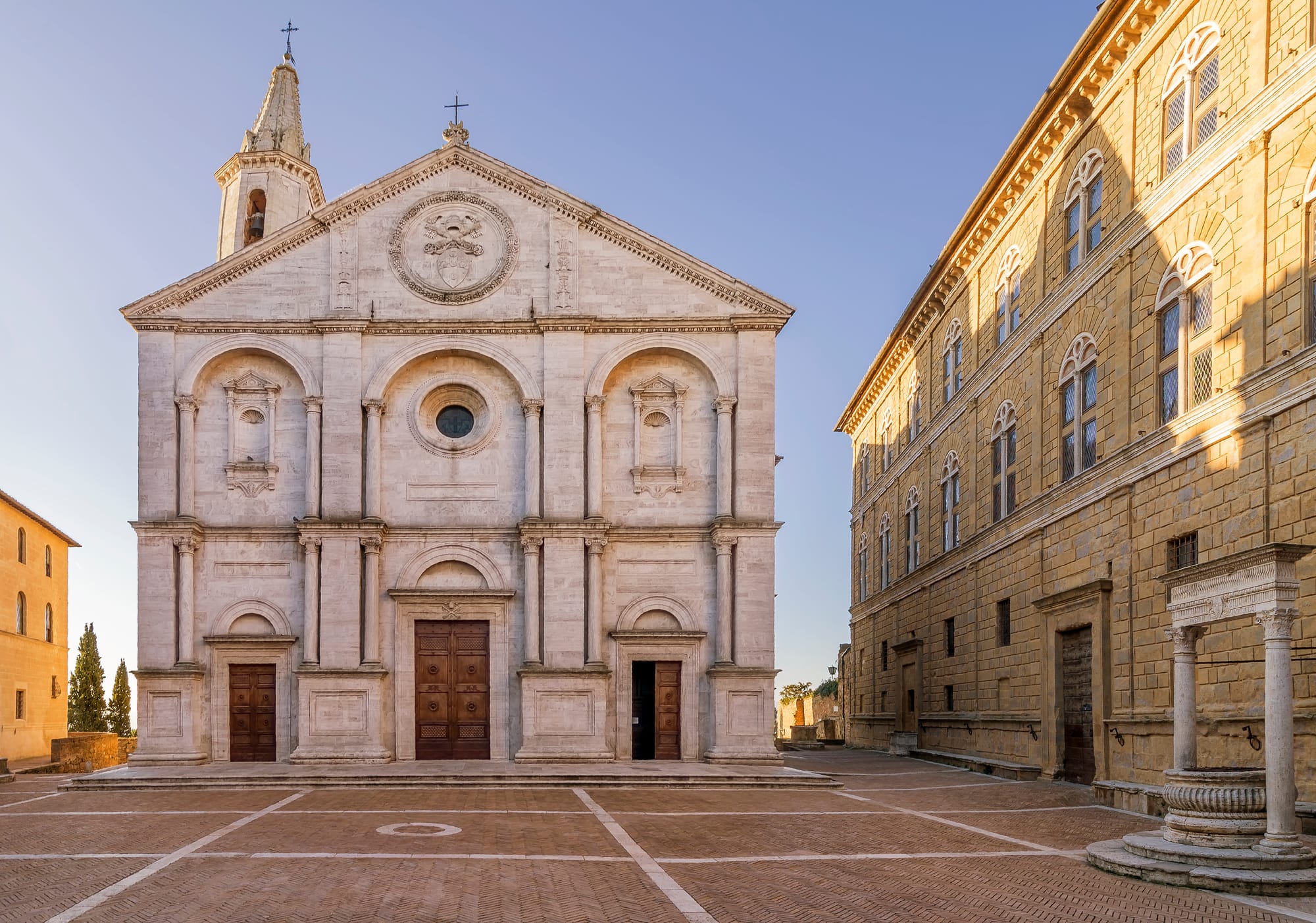
FAQs about visiting Val d'Orcia
To help you plan your trip, here are answers to some of the most common questions about visiting this iconic region of Tuscany.
Is the Val d'Orcia a good destination for a honeymoon or romantic trip?
Absolutely. The Val d'Orcia is one of Italy's most idyllic and sought-after destinations for honeymoons. Its appeal for couples lies in a perfect combination of elements, and visiting in September, as it is now, is a particularly magical time.
- Breathtaking Scenery: The landscape provides a stunning backdrop for romantic walks, sunset viewing, and endless photo opportunities.
- Intimate Accommodations: The region specializes in charming boutique hotels and luxury agriturismos with pools and stunning views, perfect for a couple's retreat.
- World-Class Food and Wine: You can enjoy candlelit dinners, private wine tastings for two, and cozy evenings in traditional osterias.
- Relaxing Pace of Life: The slow, peaceful rhythm encourages couples to disconnect and enjoy quality time together, perhaps with a treatment at the thermal spas in Bagno Vignoni.
Is driving in the Val d'Orcia difficult for tourists?
For most visitors, driving in the Val d'Orcia is a pleasure, not a challenge. The main roads are well-maintained, but you should expect some narrow, winding country lanes. The most important thing to be aware of is the ZTL (Zona a Traffico Limitato), or Limited Traffic Zone. These are common in the historic centers of all the towns. Do not drive past a ZTL sign. Instead, look for designated paid parking lots outside the ancient town walls and walk into the center. With this one rule in mind, driving is straightforward and by far the best way to explore.
What is the best town to use as a base in the Val d'Orcia?
The "best" base depends on your travel style, but three towns offer excellent options:
- Pienza: Best for couples and photographers. Its Renaissance charm, stunning valley views, and excellent restaurants make it a romantic and beautiful base.
- San Quirico d'Orcia: Best for strategic exploration. Its central location offers quick and easy access to all other towns in the valley, making it highly practical.
- Montalcino: Best for wine lovers. If your trip is centered around tasting Brunello, staying in or near Montalcino is the ideal choice. For a truly authentic experience, consider staying at an agriturismo in the countryside just outside one of these towns.
Can you visit the Val d'Orcia as a day trip from Florence?
Yes, it is technically possible to visit the Val d'Orcia on a day trip from Florence, but it will be a very long and packed day. The drive is approximately two hours each way. A realistic day trip would allow you to visit one or two towns, such as Pienza and Montepulciano, have lunch, and take in the views. However, you will miss the magic of sunrise and sunset. To truly experience the region's soul, an overnight stay is strongly recommended.
What are the best authentic souvenirs to buy in the Val d'Orcia?
The best souvenirs from the Val d'Orcia are edible and artisanal, allowing you to take an authentic taste of Tuscany home with you. Look for:
- Wine: The premier choice. Purchase a special bottle of Brunello di Montalcino or Vino Nobile di Montepulciano directly from a winery you visit.
- Pecorino di Pienza: Shops in Pienza sell vacuum-sealed wheels of aged pecorino cheese that travel well and make a perfect gift for food lovers.
- Extra Virgin Olive Oil: Look for high-quality, cold-pressed olive oil from a local farm (frantoio). If you visit later in autumn, "Olio Nuovo" (new oil) is an exceptional treat.
- Artisanal Crafts: The small shops in Pienza and Montepulciano offer beautiful local ceramics, high-quality leather goods, and hand-woven linens.
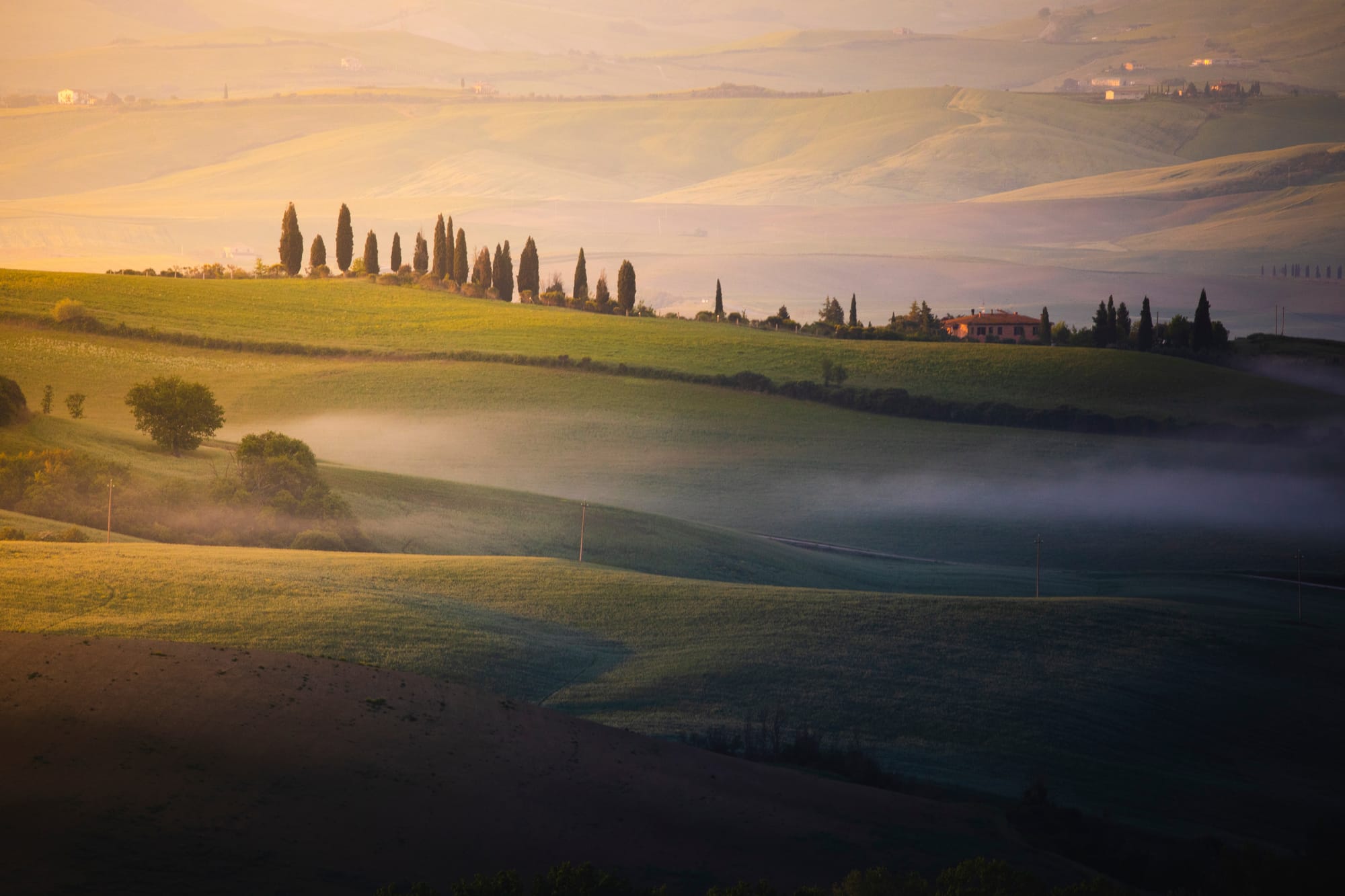
Beyond the itinerary: experiencing the soul of the Val d'Orcia
The true character of the Val d'Orcia is not revealed in a fleeting glance. It is a landscape that asks to be experienced, not merely seen. As this guide shows, the region rewards the traveler who chooses the unpaved road, who lingers over a glass of wine to talk with the producer, who sits on a stone wall simply to watch the clouds drift over the hills.
To travel here is to participate, for a short while, in a rhythm of life dictated by seasons and centuries of tradition.
For the cultural and independent traveler, this valley is more than a collection of beautiful sights; it is a narrative of art, land, and human endeavor. It is an invitation to slow down, to breathe deeply, and to discover an Italy that is authentic to its very core. This is a journey that stays with you, a golden-hued memory that calls you back long after you have departed.
Inspired to plan your journey? Find everything you need at:
- Pienza, Tuscany: the ideal Renaissance city
- An insider's guide to Siena
- The ultimate guide to Florence
- The ultimate guide to Tuscany
- The ultimate Tuscany road trip: a 7 to 10-day itinerary
Explore Tuscany like a local with our in-depth guides.
